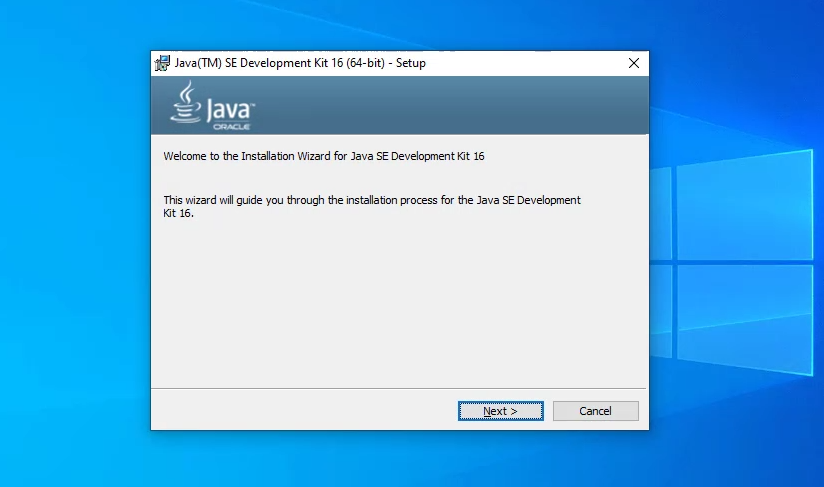

2" set JAVA_HOME=C:\Program Files (x86)\Java\jdk1.
#Java 16 jre code
I suggest you unpack the scripts to C:\Program Files\Java\scripts.Ĭall javaX "Java 20" % 1 Code language: DOS.
#Java 16 jre plus
#Java 16 jre install
The fastest way to change the environment variables is to press the Windows key and type "env" – Windows then offers "Edit the system environment variables" as a search result:Ĭheck your Java version with "cmd" Step 3: Install the Scripts to Change the Java Version The Java installers create various environment variables, which you need to clean up first (see below). Manually Setting the Java Environment Variables Some programs, such as Eclipse, define the Java version in a separate configuration file (for Eclipse, for example, this is the entry "-vm" in the eclipse.ini file). These variables should always point to the same Java installation to avoid inconsistencies. Path – is used when running a Java binary (such as java and javac) from the console.JAVA_HOME – many start scripts use this variable.The following two environment variables decide which Java version an application uses: Step 2: Define Java Environment Variables JDK 21 Early-Access Build (→ The most important new features in Java 21).You should use it only for testing purposes: The following version is currently an early access build. Java SE 20 / OpenJDK 20 (→ The most important new features in Java 20).Java SE 19 / OpenJDK 19 (→ The most important new features in Java 19).Java SE 18 / OpenJDK 18 (→ The most important new features in Java 18).Java SE 17 / OpenJDK 17 (→ The most important new features in Java 17).Java SE 16 / OpenJDK 16 (→ The most important new features in Java 16).Java SE 15 / OpenJDK 15 (→ The most important new features in Java 15).Java SE 14 / OpenJDK 14 (→ The most important new features in Java 14).Java SE 13 / OpenJDK 13 (→ The most important new features in Java 13).



#Java 16 jre download
You can download and run the installer for each version, which automatically installs the versions in separate directories. Installing multiple Java versions in parallel is incredibly easy in Windows. Let's go… Step 1: Installing Multiple Java Versions Set variables based on the Java location and version.To enable these Java version change commands on your system as well, follow this step-by-step guide. Java applications often require JAVA environment variables to be set in the system.Ĭreate a new file under /etc/profile.d directory. The output may vary depending upon the package and the version you chose to be the default Java version. OpenJDK 64-Bit Server VM 18.9 (build 11.0.11+9-LTS, mixed mode, sharing) OpenJDK Runtime Environment 18.9 (build 11.0.11+9-LTS) Verify Java VersionĬheck the java version using the following command. There are 3 programs which provide 'java'.ġ java-11-openjdk.x86_64 (/usr/lib/jvm/java-11-openjdk-11.0.11.0.9-2.el8_4.x86_64/bin/java)Ģ java-1.8.0-openjdk.x86_64 (/usr/lib/jvm/java-1.8.0-openjdk-1.8.0.8_4.x86_64/jre/bin/java)Įnter to keep the current selection, or type selection number: 1Įnter the number below the selection column to set the default Java version. If your system has multiple Java versions, the above command will list all Java versions like below. Use the alternatives command to set the default java version. To install Oracle JDK to a custom directory, use rpm -ivh –prefix=// rpmfile command. By default, Java JDK is installed in /usr/java/ directory.


 0 kommentar(er)
0 kommentar(er)
